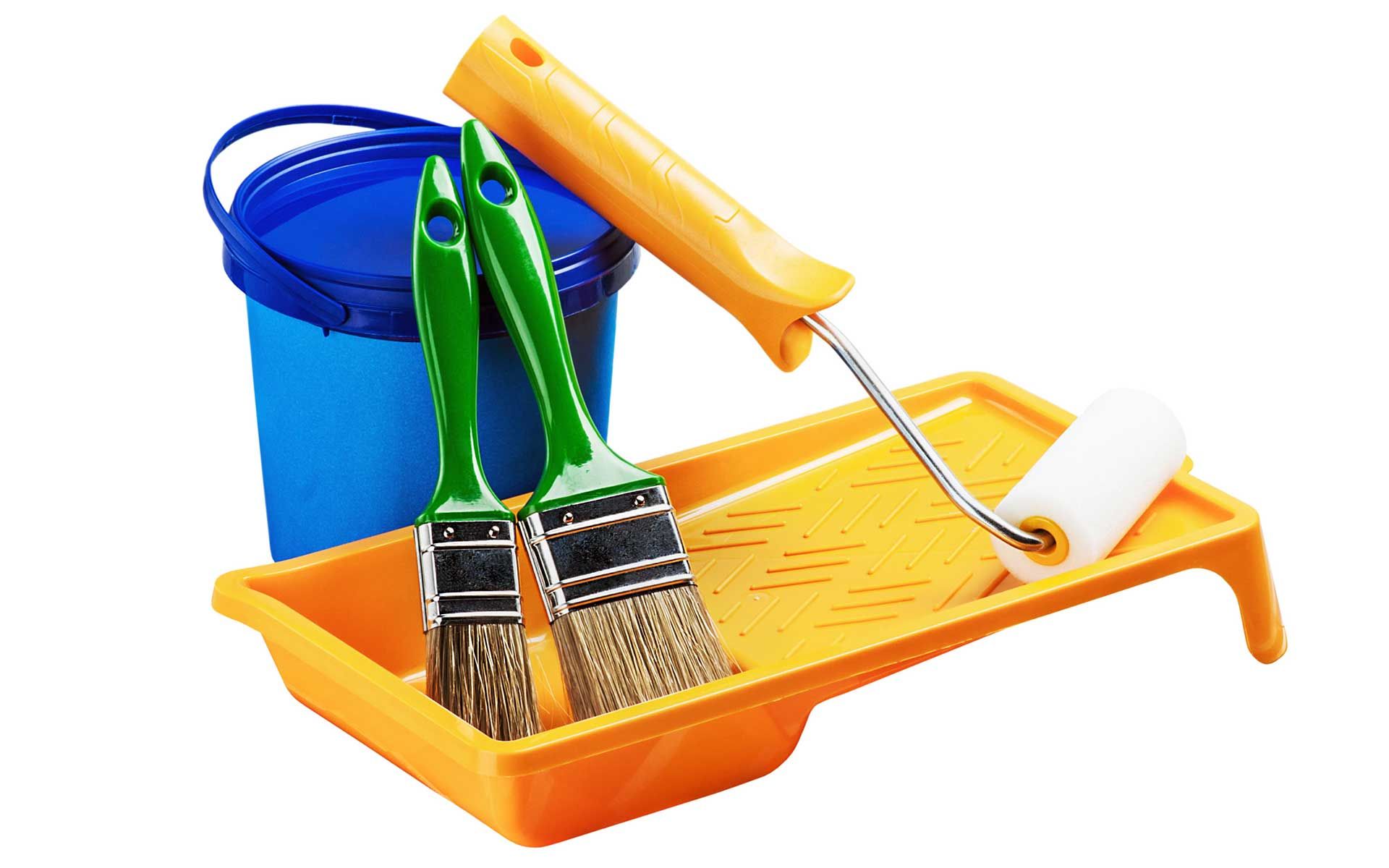Choosing Equipment
Stan's Paint Clinic Inc
Choose the Proper Paint Equipment
Make sure you have the correct equipment for your painting project. At Stan's Paint Clinic Inc, we have a variety of supplies, including brushes, rollers, and more. For over 50 years, we've served all of southeastern Idaho, providing the highest quality paints and related products. Visit our local, family-owned store in Idaho Falls to see what we have in stock. Special orders are available.
Paint Brushes
Best for: Precision work, smaller areas, edges, corners, and detailed finishes.
Advantages:
- Ideal for detailed work, such as painting trim, corners, and around edges.
- Provides more control, especially when working on intricate areas or uneven surfaces.
- Suitable for both oil-based and water-based paints.
Types of Paint Brushes:
- Angled (Sash) Brushes
- Best for: Cutting in along edges and corners, painting trim, and window frames.
- Features: Angled bristles that allow for precision and control, especially on edges.
- Flat Brushes
- Best for: Covering flat, smooth surfaces and applying paint to larger areas.
- Features: Straight bristles, ideal for spreading paint smoothly across surfaces.
- Round Brushes
- Best for: Decorative painting, detailed work, or working with curved areas.
- Features: Rounded bristles that are great for touch-ups and detail work on furniture or decorative pieces.
- Synthetic Brushes (Nylon/Polyester)
- Best for: Water-based (latex) paints.
- Features: Durable and easy to clean, these brushes maintain their shape even after multiple uses.
- Natural Bristle Brushes (China Bristle)
- Best for: Oil-based paints, varnishes, and stains.
- Features: Natural bristles that hold more paint, providing a smooth, glossy finish. Not recommended for water-based paints as they absorb water and lose their shape.
Choosing the Right Brush Size:
- 1”-2” Brushes: Best for small surfaces like trim, windows, and corners.
- 2.5”-3” Brushes: Great for medium surfaces, such as doors and cabinets.
- 4”-6” Brushes: Ideal for large, flat surfaces like walls or furniture.
Paint Rollers
Best for: Large, flat surfaces like walls, ceilings, and floors.
Advantages:
- Allows for quick, even coverage over large areas.
- Provides a smoother finish with fewer visible brush marks.
- Available in different sizes and textures for various surface types.
Types of Paint Rollers:
- Short Nap Rollers (1/4" - 3/8" Nap)
- Best for: Smooth surfaces like drywall, ceilings, doors, and cabinets.
- Features: The shorter nap (pile height) ensures a smooth finish without leaving too much texture behind. Use with water-based or oil-based paints.
- Medium Nap Rollers (1/2" - 3/4" Nap)
- Best for: Semi-smooth or lightly textured surfaces like plaster, light stucco, or brick.
- Features: Medium nap rollers hold more paint and provide good coverage on textured surfaces without leaving excessive texture.
- Long Nap Rollers (1" - 1 1/4" Nap)
- Best for: Rough or heavily textured surfaces such as brick, concrete, and textured walls.
- Features: The long fibers hold more paint and can reach into cracks and crevices, ensuring full coverage on uneven surfaces.
- Foam Rollers
- Best for: Smooth surfaces like cabinets and furniture where you want a very smooth finish.
- Features: Foam rollers don’t leave roller marks and are great for gloss or semi-gloss finishes, making them ideal for detailed woodwork and trim.
Choosing the Right Roller Size:
- Mini Rollers (4”-6”): Best for small areas, like doors, furniture, or tight spaces.
- Standard Rollers (9”): Ideal for large surfaces like walls, ceilings, and floors.
- Jumbo Rollers (12” or larger): Useful for extra-large spaces like commercial buildings or large exteriors.
Brush vs. Roller: Which Should You Use?
- For Large, Flat Areas: Use a roller to cover large areas like walls, ceilings, or floors quickly and evenly.
- For Detailed Work: Use a brush for cutting in around edges, trim, corners, and any detailed work like window frames or furniture.
- For Textured Surfaces: A long nap roller works best on textured surfaces like stucco, brick, or rough wood.
- For Smooth Surfaces: Short nap rollers or foam rollers will give you a smooth, even finish on surfaces like drywall, cabinets, and furniture.
Tips for Success
- Match the Brush or Roller to the Paint: Use synthetic brushes for water-based paints and natural bristle brushes for oil-based paints. Choose a roller nap that suits the texture of your surface.
- Use High-Quality Tools: Investing in high-quality brushes and rollers will give you better control, smoother finishes, and fewer brush or roller marks.
- Clean Your Tools Properly: Clean brushes with water if using water-based paint and with mineral spirits or paint thinner if using oil-based products. Clean rollers by thoroughly rinsing them under warm water (for water-based paints) or using a roller cleaner for oil-based paints.




Share On: